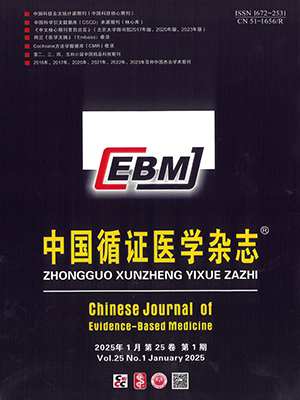| 1. |
Umakanthan S, Patil S, Subramaniam N, et al. COVID-19 vaccine hesitancy and resistance in India explored through a population-based longitudinal survey. Vaccines (Basel), 2021, 9(10): 1064.
|
| 2. |
Umakanthan S, Ramlagan A, Ramlal C, et al. COVID-19 awareness among undergraduate medical students in Trinidad: a cross-sectional study: 2. Inter Med Edu, 2022, 1(2): 22-32.
|
| 3. |
Rabie AM, Abdalla M. Evaluation of a series of nucleoside analogs as effective anticoronaviral-2 drugs against the Omicron-B. 1.1. 529/BA. 2 subvariant: a repurposing research study. Med Chem Res, 2023, 32(2): 326-341.
|
| 4. |
Tian L, Pang Z, Li M, et al. Molnupiravir and its antiviral activity against COVID-19. Front Immunol, 2022, 13: 855496.
|
| 5. |
国家中医药管理局, 国家卫生健康委员会. 新型冠状病毒感染重症病例诊疗方案(试行第四版). 中国病毒病杂志, 2023, 13(2): 111-114.
|
| 6. |
Tian F, Feng Q, Chen Z. Efficacy and safety of molnupiravir treatment for COVID-19: a systematic review and meta-analysis of randomized controlled trials. Int J Antimicrob Agents, 2023, 62(2): 106870.
|
| 7. |
Sun M, Lai H, Huang J, et al. Molnupiravir for the treatment of non-severe COVID-19: a systematic review and meta-analysis of 14 randomized trials with 34 570 patients. J Antimicrob Chemother, 2023, 78(9): 2131-2139.
|
| 8. |
Huang PY, Liu TH, Wu JY, et al. Clinical efficacy and safety of molnupiravir for nonhospitalized and hospitalized patients with COVID-19: a systematic review and meta-analysis of randomized control trials. J Med Virol, 2023, 95(3): e28621.
|
| 9. |
Fatima M, Azeem S, Saeed J, et al. Efficacy and safety of molnupiravir for COVID-19 patients. Eur J Intern Med, 2022, 102: 118-121.
|
| 10. |
Malin JJ, Weibel S, Gruell H, et al. Efficacy and safety of molnupiravir for the treatment of SARS-CoV-2 infection: a systematic review and meta-analysis. J Antimicrob Chemother, 2023, 78(7): 1586-1598.
|
| 11. |
GAO Y, LIU M, LI Z, et al. Molnupiravir for treatment of adults with mild or moderate COVID-19: a systematic review and meta-analysis of randomised controlled trials. Clin Micro Infect, 2023: S1198743X23001854.
|
| 12. |
Amani B, Zareei S, Amani B. Rapid review and meta-analysis of adverse events associated with molnupiravir in patients with COVID-19. Br J Clin Pharmacol, 2022, 88(10): 4403-4411.
|
| 13. |
Pitre T, Van Alstine R, Chick G, et al. Antiviral drug treatment for nonsevere COVID-19: a systematic review and network meta-analysis. CMAJ, 2022, 194(28): E969-E980.
|
| 14. |
Anonymous. Epistemonikos: database of the best evidence-based health care. 2023.
|
| 15. |
Jayk Bernal A, Gomes da Silva MM, Musungaie DB, et al. Molnupiravir for oral treatment of Covid-19 in Nonhospitalized patients. N Engl J Med, 2022, 386(6): 509-520.
|
| 16. |
Butler CC, Hobbs FDR, Gbinigie OA, et al. Molnupiravir plus usual care versus usual care alone as early treatment for adults with COVID-19 at increased risk of adverse outcomes (PANORAMIC): an open-label, platform-adaptive randomised controlled trial. Lancet, 2023, 401(10373): 281-293.
|
| 17. |
Caraco Y, Crofoot GE, Moncada PA, et al. Phase 2/3 trial of molnupiravir for treatment of Covid-19 in Nonhospitalized adults. NEJM Evid, 2022, 1(2): 2100013.
|
| 18. |
Fischer WA, Eron JJ, Holman W, et al. A phase 2a clinical trial of molnupiravir in patients with COVID-19 shows accelerated SARS-CoV-2 RNA clearance and elimination of infectious virus. Sci Transl Med, 2022, 14(628): eabl7430.
|
| 19. |
Zou R, Peng L, Shu D, et al. Antiviral efficacy and safety of molnupiravir against Omicron variant infection: a randomized controlled clinical trial. Front Pharmacol, 2022, 13: 939573.
|
| 20. |
Tippabhotla SK, Lahiri Dr S. Efficacy and safety of molnupiravir for the treatment of non-hospitalized adults with mild COVID-19: a randomized, open-label, parallel-group phase 3 trial. SSRN J, 2022.
|
| 21. |
Sinha S, N K, Suram VK, et al. Efficacy and Safety of molnupiravir in mild COVID-19 patients in India. Cureus, 2022, 14(11): e31508.
|
| 22. |
Khoo SH, FitzGerald R, Saunders G, et al. Molnupiravir versus placebo in unvaccinated and vaccinated patients with early SARS-CoV-2 infection in the UK (AGILE CST-2): a randomised, placebo-controlled, double-blind, phase 2 trial. Lancet Infect Dis, 2023, 23(2): 183-195.
|
| 23. |
Arribas JR, Bhagani S, Lobo SM, et al. Randomized trial of molnupiravir or placebo in patients hospitalized with Covid-19. NEJM Evid, 2022, 1(2): 2100044.
|
| 24. |
Villamarín M, Márquez-Algaba E, Esperalba J, et al. Preliminary clinical experience of molnupiravir to prevent progression of COVID-19 in kidney transplant recipients. Transplantation, 2022, 106(11): 2200-2204.
|
| 25. |
浙江省医院药事管理质控中心. 莫诺拉韦胶囊的临床问题及药学建议—新型冠状病毒感染临床用药建议(二). 中国合理用药探索, 2023, 20(2): 54-55.
|
| 26. |
Lamontagne F, Agarwal A, Rochwerg B, et al. A living WHO guideline on drugs for COVID-19. BMJ, 2020, 370: m3379.
|




